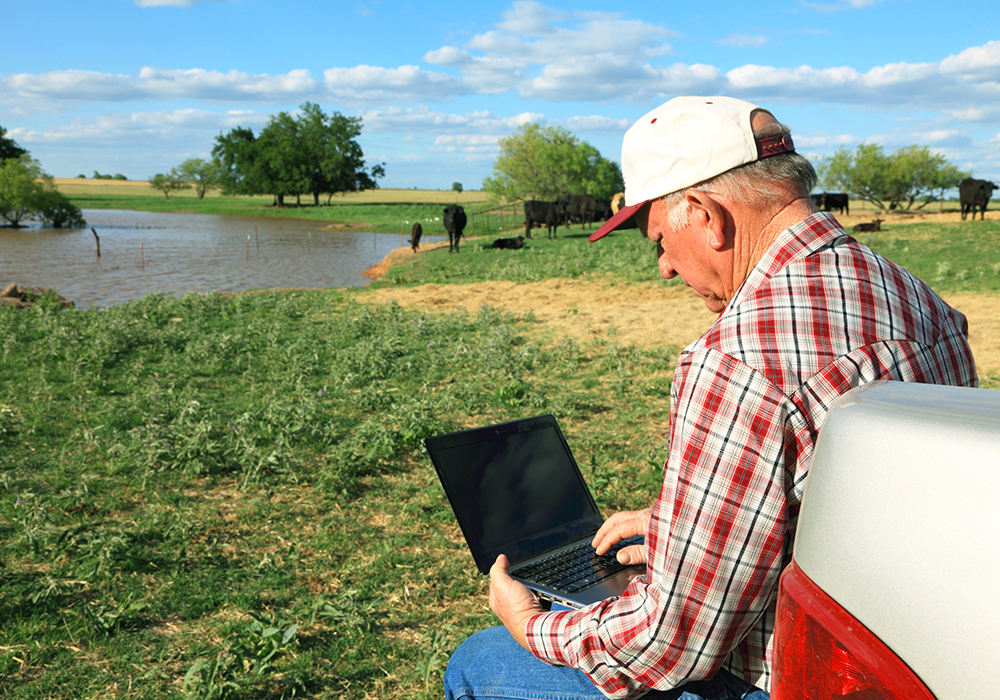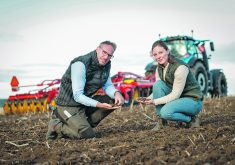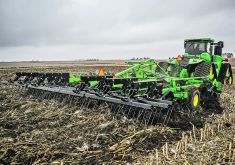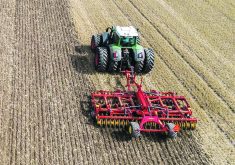The reliability of precision agriculture continues to grow as mobile data connection improves in the field.
“When we talk about a mobile data connection, that would be a wireless network,” said Greg Jacobs, external communications manager with SaskTel.
“If you have a wide availability of wireless connectivity, you have a greater ability to use that data connectivity to implement some of these technologies.
“At SaskTel we see ourselves as an enabler when it comes to precision agriculture, or smart ag, or ag tech. There’s a number of different terms we’ve heard used related to essentially improving agriculture by using the technologies and data available in today’s world.”
Read Also

AGCanadaTV: In case you missed it; your national ag news recap for Nov. 7, 2025
https://youtu.be/hDhaCHQRyso Carney government drops first federal budget The 2025 federal budget put a hefty focus on trade – particularly diversifying…
Cellular connectivity is at the heart of the matter. It is required to enter field data into phone apps, get soil information from remote field sensors, operate autonomous self-driving farm equipment to seed and spray fields, monitor bins and make phone calls.
Low speeds have limited some farmers’ ability to use technologies such as precision agriculture and smart farms that rely on broadband.
Within the next six weeks, Jacobs said SaskTel will wrap up its Wireless Saskatchewan initiative, a $107 million investment that involved installation of nearly 200 4G cell towers in rural communities and remote areas.
“It’s essentially a cell tower, but when you’re looking at trying to deliver some of the precision ag stuff like soil monitors, you need a data connection. And that’s what the wireless network does. You have data services available to you.”
He said a 5G connection is not necessary for a soil or grain bin monitor, for example, because they don’t require much bandwidth or very low latency (the reaction time of the internet connection).
The user platform will check input at a scheduled allotment, whether it’s a few times a day, once a day or weekly.
“It just fires up, sends the data and then that’s it. So you don’t need an all-encompassing network to do that. You just really need a day connection.
“With our recent improvements with our wireless network, specifically in rural areas, it’s more widely available,” Jacobs said.
In Manitoba, Bell MTS is completing an accelerated network fibre and wireless rollout across the province. Gigabit Fibe Internet service is available in more than 30 communities.
The company’s LTE Advanced mobile service now reaches more than 90 percent of Manitobans including previously underserved and remote communities, according to Bell MTS.
In 2020, it activated 18 new wireless sites in rural and remote communities in the province. Work is also nearing completion for continuous wireless coverage along Highway 6 up to Thompson.
All three of the main prairie information and communication providers, which include Bell MTS in Manitoba and Telus Agriculture in Alberta, have formed partnerships with educational institutions to foster and support innovation of precision ag technology.
Last year, SaskTel and the University of Saskatchewan launched a “living laboratory” at the university’s Livestock and Forage Centre of Excellence to develop and test agricultural technologies.
The research Smart Farm is focused on advancing livestock farming through use of the latest digital agricultural technologies such as drones and sensors that can monitor herd health.
“From an enablement perspective we want to work with these ag tech companies so that whether they just want to utilize our infrastructure for connectivity, like a cell network, we’ve got that,” said Jacobs.
“Or if they need to utilize some other aspects of our business, like a hosted contact center, or data center to store this information, then we can enable that.
“SaskTel isn’t coming out with a line of sensors for soil monitoring or grain bin monitoring. We more so want to work with the tech companies in that space and utilize our strengths, our knowledge base to enhance what they’re doing.”
The company recently announced several new agtech initiatives and innovations using its machine-to-machine network.
One example involves sensors installed in grain bins to monitor moisture and fill levels. That information is relayed to a user platform that the producer can quickly review.
“Using our machine-to-machine technology, we’re working with them to enable that. That’s really what I see will continue to happen in the ag sector from a precision perspective when we’re talking about soil monitors for moisture content or moisture level of particular areas of your field and nutrient content as well,” said Jacobs.
Bell MTS and the University of Manitoba are working together on the Bell MTS Innovations in Agriculture Program that provides students with new opportunities to develop Internet of Things (IoT) technologies for application in agriculture and food sciences.
In a statement, the company said IoT applications can improve food production by managing the location and performance of farm machinery, providing remote analysis of soil samples, field conditions, seeding rate and crop health, and monitoring storage and processing operations.
By connecting the physical world through fibre and wireless broadband networks using sensors and other measuring and operational devices, IoT is helping transform the way producers raise livestock and grow crops.
Last year, Olds College in Alberta announced its 2,800-acre Smart Farm will act as Telus Agriculture’s living lab to conduct applied research and test the real-world application of new technology.
On the Smart Farm, Telus Agriculture has been able to test security systems, weather stations and field sensors in live conditions, as well as artificial intelligence and remote-sourcing imagery solutions.
The collaboration has also enabled Telus to test ways to address rural connectivity issues by leveraging dead zones on the property.
This spring, the two organizations built and tested a repeater, which captures signal from the nearest cellular tower and boosts it to extend coverage.
The potential game changer could offer farmers a non-intrusive, solar-powered device that requires no power cable installation or technician service.
The Smart Farm will also enable live condition testing for the Telus 5G network, which has the potential to enable faster, more reliable connections.
















